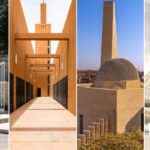How Architecture Reflects and Shapes Cultural Identities
- By -Peter
- Posted on
- Posted in Architectural Design
Architecture is a powerful expression of cultural identity, encapsulating the values, beliefs, and traditions of a society. It reflects historical context, social structures, and technological advancements, while simultaneously shaping cultural identities by influencing how communities interact with their built environment. This article explores the dynamic relationship between architecture and cultural identity.
1. Historical Reflection
Architecture serves as a historical record, preserving the cultural heritage and identity of a society over time. Historical buildings and monuments provide insights into the past, reflecting the architectural styles, construction techniques, and cultural values of different eras.
- Ancient Egypt: The grandeur of the pyramids and temples showcases the Egyptians’ religious beliefs, social hierarchy, and technological prowess.
- Gothic Cathedrals: These towering structures reflect the medieval period’s emphasis on religion, community, and craftsmanship, illustrating the era’s artistic and engineering achievements.
- Classical Greece: The Parthenon and other ancient Greek structures embody the principles of democracy, philosophy, and aesthetic harmony that were central to Greek culture.
2. Cultural Expression
Architectural styles and designs are often directly influenced by the cultural and religious practices of a society. Different architectural elements and motifs convey symbolic meanings and cultural narratives.
- Islamic Architecture: The use of geometric patterns, calligraphy, and intricate tile work in mosques and palaces reflects the Islamic emphasis on aniconism, spirituality, and intellectualism.
- Japanese Architecture: Traditional Japanese houses and temples, characterized by simplicity, natural materials, and integration with the natural environment, reflect the cultural values of harmony, simplicity, and respect for nature.
- Indigenous Architecture: Structures built by indigenous peoples, such as the igloos of the Inuit or the adobe homes of the Pueblo, reflect their adaptation to local climates, materials, and social structures.
3. Shaping Social Interactions
Architecture shapes the way people interact with their environment and with each other. Urban planning and architectural design influence social behavior, community engagement, and the overall quality of life.
- Public Spaces: The design of public squares, parks, and community centers fosters social interaction, cultural events, and community cohesion. For example, the piazzas of Italy serve as central gathering places for social and cultural activities.
- Residential Architecture: The layout of homes and neighborhoods reflects and influences family structures, social interactions, and cultural practices. Traditional courtyard houses in China, for instance, promote family unity and privacy while accommodating extended families.
- Urban Planning: The arrangement of streets, buildings, and public spaces in cities influences mobility, accessibility, and social dynamics. The grid layout of cities like New York promotes efficiency and order, reflecting modernist principles.
4. Symbolism and Identity
Iconic buildings and landmarks often become symbols of cultural identity, representing the aspirations and achievements of a society. These structures can evoke pride, unity, and a sense of belonging among the people.
- Eiffel Tower: As a symbol of Paris and French innovation, the Eiffel Tower embodies the spirit of modernity and cultural pride.
- Sydney Opera House: This architectural masterpiece represents Australia’s creativity, diversity, and cultural sophistication, becoming a global symbol of the country’s identity.
- Taj Mahal: The Taj Mahal stands as a symbol of love and artistic excellence, reflecting the Mughal era’s cultural richness and architectural brilliance.
5. Adaptation and Innovation
Contemporary architecture often blends traditional elements with modern innovations, reflecting the dynamic nature of cultural identity in a globalized world. Architects draw inspiration from diverse cultures and integrate new technologies to create buildings that resonate with both local and global audiences.
- Vernacular Architecture: Modern interpretations of vernacular architecture preserve cultural heritage while incorporating contemporary materials and sustainable practices. For example, the use of traditional thatched roofs combined with modern insulation techniques in tropical regions.
- Cultural Fusion: Buildings that incorporate elements from different cultural traditions celebrate diversity and inclusivity. The design of multicultural community centers often reflects this fusion, promoting cultural exchange and understanding.

Conclusion
Architecture is a vital medium through which cultural identities are expressed and shaped. It reflects historical context, cultural values, and social structures while influencing how people interact with their environment and each other. Through historical reflection, cultural expression, social interaction, symbolism, and adaptation, architecture plays a crucial role in defining and preserving the cultural identity of societies around the world. By understanding and appreciating this relationship, architects and planners can create built environments that honor cultural heritage and foster vibrant, inclusive communities.



